
Ha Long: The Emerald Gem of Vietnam
Discover Ha Long, Vietnam's coastal gem, where stunning limestone islands meet emerald waters, and vibrant local culture thrives in a blend of old and new.
Ha Long, located in the northeastern region of Vietnam, is a stunning coastal city known for its breathtaking natural beauty and rich cultural heritage. Famous for Ha Long Bay, a UNESCO World Heritage Site, the city is a paradise for nature lovers and adventurers alike. The bay features thousands of limestone islands and islets, each topped with lush greenery and surrounded by emerald waters. A cruise around the bay offers an unforgettable experience, with opportunities to explore hidden caves, floating fishing villages, and secluded beaches. The city itself is a vibrant mix of old and new. The bustling markets, filled with fresh seafood and local produce, offer a glimpse into everyday life in Ha Long. Meanwhile, modern attractions such as Sun World Ha Long Complex provide fun for families and thrill-seekers. For those interested in history, the Quang Ninh Museum and Library offers insights into the region's past. Ha Long is also a gateway to other attractions in the region. The nearby Cat Ba Island is perfect for hiking and rock climbing, while Bai Tu Long Bay offers a quieter alternative to Ha Long Bay. Whether you're looking to relax on a beach, explore natural wonders, or immerse yourself in local culture, Ha Long has something for everyone.
Local tips in Ha Long
- Book a cruise to explore Ha Long Bay's hidden caves and floating villages. Morning and sunset cruises offer the best views.
- Visit Sun World Ha Long Complex for a mix of thrilling rides and beautiful views from the Queen Cable Car.
- Try local seafood dishes at the city's markets and restaurants. Freshly caught seafood is a highlight of Ha Long's cuisine.
- Wear comfortable shoes for walking tours, especially if you plan to explore the caves or hiking trails.
- Consider visiting in the off-peak season (September to November) to avoid crowds and enjoy milder weather.
Neighbourhoods in Ha Long
Ha Long: The Emerald Gem of Vietnam
Ha Long, located in the northeastern region of Vietnam, is a stunning coastal city known for its breathtaking natural beauty and rich cultural heritage. Famous for Ha Long Bay, a UNESCO World Heritage Site, the city is a paradise for nature lovers and adventurers alike. The bay features thousands of limestone islands and islets, each topped with lush greenery and surrounded by emerald waters. A cruise around the bay offers an unforgettable experience, with opportunities to explore hidden caves, floating fishing villages, and secluded beaches. The city itself is a vibrant mix of old and new. The bustling markets, filled with fresh seafood and local produce, offer a glimpse into everyday life in Ha Long. Meanwhile, modern attractions such as Sun World Ha Long Complex provide fun for families and thrill-seekers. For those interested in history, the Quang Ninh Museum and Library offers insights into the region's past. Ha Long is also a gateway to other attractions in the region. The nearby Cat Ba Island is perfect for hiking and rock climbing, while Bai Tu Long Bay offers a quieter alternative to Ha Long Bay. Whether you're looking to relax on a beach, explore natural wonders, or immerse yourself in local culture, Ha Long has something for everyone.
When is the best time to go to Ha Long?
Iconic landmarks you can’t miss
Sun World Halong Complex
Discover unparalleled fun and breathtaking views at Sun World Halong Complex, the ultimate amusement park in Ha Long, Vietnam.
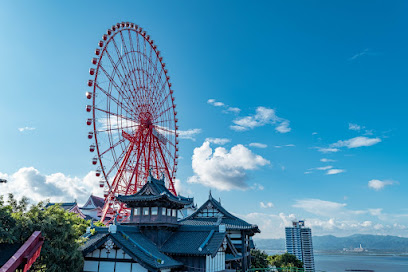
Bảo tàng Quảng Ninh
Explore the dynamic history and culture of Quảng Ninh at the architecturally stunning Quảng Ninh Museum, where tradition meets modernity.

Sung Sot Cave
Explore Sung Sot Cave in Ha Long Bay, a geological marvel filled with stunning formations and rich history, perfect for adventure and nature lovers.

Hạ Long Bay
Explore the breathtaking natural beauty of Hạ Long Bay, Vietnam's UNESCO World Heritage Site with stunning limestone islands and rich cultural heritage.

Cáp Treo Nữ Hoàng
Experience unparalleled views of Ha Long Bay from the Cáp Treo Nữ Hoàng mountain cable car, a breathtaking adventure for every traveler.
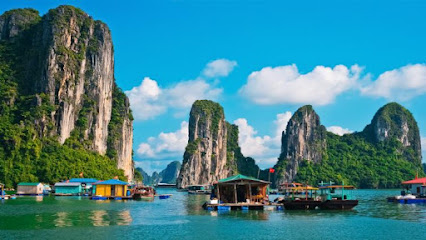
Muong Thanh Hotel
Discover unparalleled luxury and breathtaking views at Muong Thanh Hotel, your gateway to exploring the stunning Ha Long Bay in Vietnam.

Ha Long Market
Explore the vibrant Ha Long Market, a cultural hub where local flavors and crafts come to life in the heart of Vietnam's scenic Ha Long City.

Bai Chay Beach
Discover the beauty and vibrancy of Bai Chay Beach in Ha Long, Vietnam, where golden sands meet breathtaking waters and rich culinary experiences await.

Wyndham Legend Halong Hotel
Experience luxury and breathtaking views at Wyndham Legend Halong Hotel, your ideal retreat in Halong Bay, Vietnam.

Sun World Halong Park
Discover the excitement of Sun World Halong Park – a thrilling amusement center in Ha Long, Vietnam, with stunning views and unforgettable attractions.

Tuan Chau Island
Explore Tuan Chau Island, a serene haven in Ha Long Bay, Vietnam, where stunning beaches, thrilling water sports, and vibrant nightlife await you.

Bãi Cháy Market
Experience the vibrant culture and delectable flavors of Vietnam at Bãi Chảy Market in Hạ Long, a must-visit for every traveler.

Tuan Chau Resort Ha Long
Experience luxury and adventure at Tuan Chau Resort, nestled in the breathtaking Ha Long Bay, Vietnam's jewel of natural beauty.

Dau Go Cave
Explore the enchanting Dau Go Cave in Ha Long Bay, a UNESCO World Heritage site with breathtaking natural beauty and rich historical significance.

Muong Thanh Luxury Ha Long Centre Hotel
Discover the perfect blend of luxury and comfort at Muong Thanh Luxury Ha Long Centre Hotel, your gateway to the breathtaking Halong Bay.

Unmissable attractions to see
Sun World Halong Complex
Discover the thrill of Sun World Halong Complex, an amusement park offering breathtaking views and endless adventures in Halong Bay, Vietnam.

Bảo tàng Quảng Ninh
Discover the captivating heritage of Quảng Ninh at Bảo Tàng Quảng Ninh, where history comes alive through engaging exhibits and cultural treasures.

Sung Sot Cave
Discover the breathtaking beauty of Sung Sot Cave in Ha Long Bay, a natural wonder filled with stunning rock formations and captivating landscapes.

Hạ Long Bay
Explore the mesmerizing beauty of Ha Long Bay, Vietnam, where emerald waters meet towering limestone islands in a breathtaking landscape.

Yen Tu Mountain
Explore the serene beauty and rich spiritual heritage of Yen Tu Mountain, a must-visit pilgrimage site in Vietnam's Quảng Ninh province.
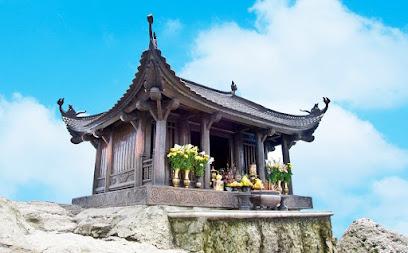
Ba Vàng Pagoda
Experience the spiritual serenity and stunning architecture of Ba Vàng Pagoda in Quang Ninh, a must-visit Buddhist temple for every traveler.

Bai Chay Beach
Experience the breathtaking beauty and vibrant culture of Bai Chay Beach, the ultimate coastal getaway in Ha Long, Vietnam.
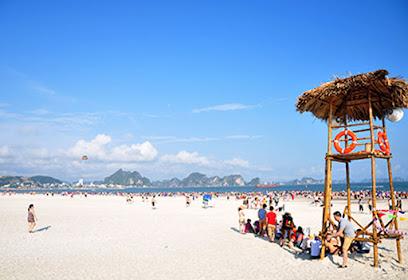
Halong Park (Dragon Park)
Discover Halong Park, an exhilarating amusement park in Ha Long, Vietnam, perfect for family adventures and thrilling rides amidst stunning landscapes.

Sun World Halong Park
Discover the excitement of Sun World Halong Park, a top tourist attraction in Vietnam offering thrilling rides, cultural experiences, and stunning views.

Hang Luồn
Discover Hang Luồn, the breathtaking limestone cave in Cát Hải, Vietnam, where nature's beauty meets adventure amidst stunning landscapes.
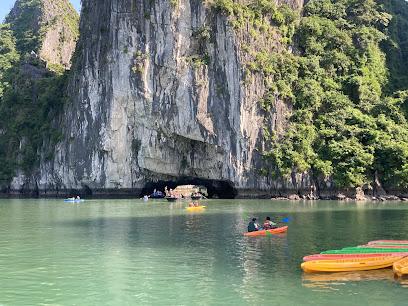
HaiPhong Opera House
Experience the elegance of the Hai Phong Opera House, a cultural landmark blending French colonial architecture with vibrant Vietnamese performances.
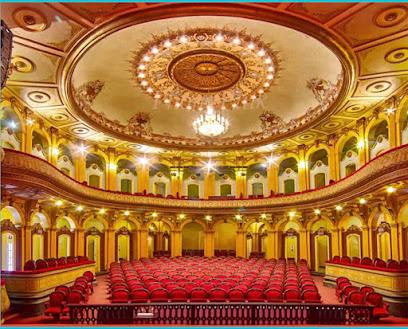
Tuan Chau Island
Experience the beauty of Tuan Chau Island, where pristine beaches meet vibrant culture and thrilling adventures in Ha Long Bay, Vietnam.

Dau Go Cave
Explore the enchanting Dau Go Cave in Cát Hải, Hai Phong, a natural wonder boasting stunning limestone formations and historical significance.

Cát Bà Island
Experience the breathtaking beauty and adventure of Cát Bà Island, Vietnam's largest island in the Halong Bay area, with stunning landscapes and vibrant marine life.
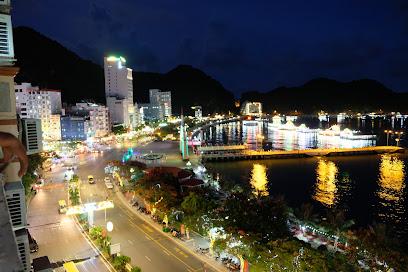
Alisa Premier Cruise- Best 5 Star Cruise in Halong Bay
Discover the beauty of Halong Bay with Alisa Premier Cruise, where luxury meets adventure on unforgettable voyages through stunning landscapes.

Essential places to dine
Nhà hàng Hồng Hạnh 3
Experience authentic Vietnamese flavors at Nhà hàng Hồng Hạnh 3 in Bãi Cháy - a culinary gem offering fresh seafood and traditional dishes.

Nhà hàng Ngọc Phương Nam (Nhà hàng Phương Nam Hạ Long)
Experience authentic Vietnamese cuisine with breathtaking views at Nhà Hàng Ngọc Phương Nam in beautiful Hạ Long.

Nhà Hàng Hải Sản Đại Dương Vàng 9999 (Hải sản Ngon)
Discover the flavors of Hạ Long at Hải Sản Ngon - Đại Dương Vàng 9999, where fresh seafood meets stunning bay views.
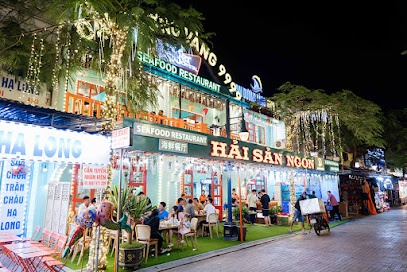
Nhà hàng Buffet Sen Á Đông
Experience diverse flavors at Nhà Hàng Buffet Sen Á Đông – where culinary excellence meets stunning views in Hạ Long.

Papa's BBQ Restaurant
Experience authentic German barbecue in the heart of Ha Long at Papa's BBQ Restaurant – where flavor meets local charm.

Nhà hàng Ngọc Lục Bảo - Nhà Hàng Hải Sản Quảng Ninh
Experience exquisite seafood dining at Ngọc Lục Bảo in Hạ Long - where culinary artistry meets stunning coastal views.

Nhà Hàng Linh Đan Halong
Experience authentic Vietnamese cuisine with stunning views at Nhà Hàng Linh Đan Halong in Ha Long City.

Phở Bò Thố Đá - Cơm Tự Chọn
Experience authentic Vietnamese flavors at Phở Bò Thố Đá - Cơm Tự Chọn in Hạ Long – a buffet paradise for food lovers!

Indian master food restaurant Ha Long Bai chay
Experience authentic Indian cuisine at Ha Long's top-rated restaurant, where rich flavors meet warm hospitality in a vibrant setting.

Á Đông Restaurant
Discover the rich flavors of Vietnam fused with French and Italian cuisine at Á Đông Restaurant in Hạ Long.

Nhà Hàng Ẩm Thực Làng Chài Hạ Long
Discover authentic Vietnamese cuisine at Nhà Hàng Ẩm Thực Làng Chài Hạ Long - where fresh seafood meets stunning bay views.

Vanakkam Indian Family Restaurant - Taste of india
Savor authentic Indian flavors at Vanakkam Indian Family Restaurant in Hạ Long - where culinary traditions meet delightful dining.

Nhà Hàng Bangkok
Discover authentic Thai flavors at Nhà Hàng Bangkok in Hạ Long - where every dish tells a delicious story.

Soul Bowl at Citadines Marina Ha Long
Experience the best of Asian cuisine at Soul Bowl in Citadines Marina Ha Long—where every dish tells a story.

Nhà Hàng Hạ Long 1
Discover authentic Vietnamese cuisine at Nhà Hàng Hạ Long 1 in the heart of beautiful Quảng Ninh.
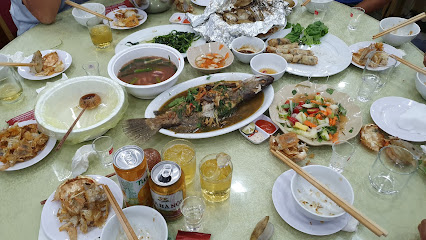
Markets, malls and hidden boutiques
GO! Hạ Long
Explore GO! Hạ Long, Vietnam's vibrant hypermarket for a unique shopping experience filled with local flavors and cultural treasures.
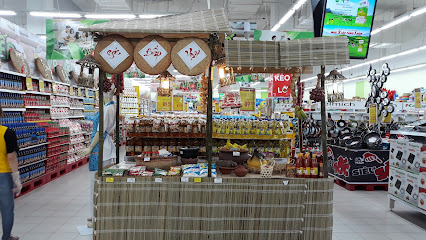
Legend Pearl
Explore the exquisite craftsmanship of Vietnamese jewelry at Legend Pearl in the heart of Hạ Long City.
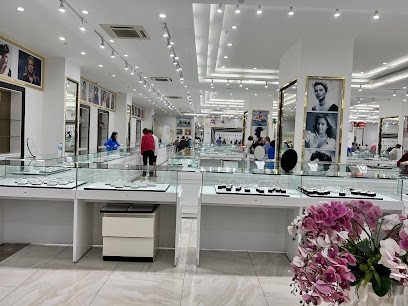
Vincom Plaza Hạ Long
Discover the ultimate shopping experience at Vincom Plaza Hạ Long, where retail, dining, and entertainment meet in a stunning coastal setting.

MM Mega Market Hạ Long
Discover MM Mega Market Hạ Long: A vibrant shopping experience with local flavors, fresh produce, and international goods in the heart of Vietnam.

Halong Marine Plaza
Discover the lively shopping and dining experience at Halong Marine Plaza, a top outlet mall in Hạ Long City, Vietnam.
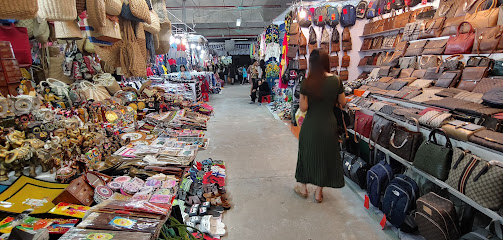
Bamboo shop
Explore Bamboo Shop in Ha Long for unique Vietnamese crafts, souvenirs, and a vibrant shopping experience that reflects local artistry.

Giầy Dép Lucky Hạ Long
Discover stylish footwear at Giầy Dép Lucky Hạ Long, your go-to shoe store in the heart of Hạ Long, Vietnam, perfect for every traveler.

TOKYOLIFE Bãi Cháy
Discover fashion and culture at TOKYOLIFE Bãi Cháy, a vibrant shopping mall in Hạ Long, offering unique costumes and stylish accessories.

Canifa Trần Hưng Đạo Quảng Ninh
Discover contemporary Vietnamese fashion at Canifa Trần Hưng Đạo Quảng Ninh, where quality meets style in Hạ Long.
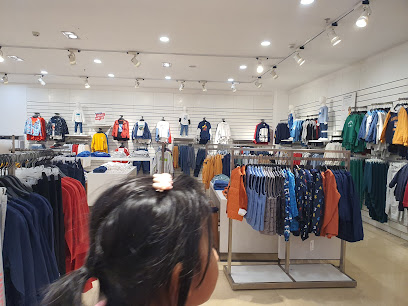
Biluxury Hạ Long
Explore the elegance of Vietnamese culture at Biluxury Hạ Long - your destination for exquisite costumes and traditional attire.

VÂU Tiệm Quần Áo Streetwear So Cute
Explore trendy streetwear at VÂU Tiệm Quần Áo in Hạ Long, where fashion meets affordability in a chic shopping experience.

Quà tặng Léna
Explore Quà tặng Léna, where Vietnamese artistry meets heartfelt souvenirs in the enchanting Bãi Cháy, Ha Long.

Viet Tien Fashion Shop
Explore stylish women's clothing at Viet Tien Fashion Shop, a top destination in Ha Long for trendy fashion and unique Vietnamese styles.

Shop Đồ Nhật Nội Địa Hạ Long - Shop Nhật Hạ Long Osaka
Discover the essence of Japan in Hạ Long with authentic groceries, cosmetics, and fashion accessories at Shop Đồ Nhật Nội Địa Hạ Long.

silk halong shop
Discover the exquisite craftsmanship of Vietnamese silk at Silk Halong Shop, a must-visit destination for unique souvenirs in Ha Long.

Essential bars & hidden hideouts
Chill Beach Bar - Hạ Long
Discover Chill Beach Bar in Hạ Long – where exquisite drinks, delectable food, and stunning views come together for the ultimate beachside experience.

H Club
Experience the vibrant nightlife at H Club in Hạ Long, where cocktails, music, and local culture come together for an unforgettable evening.

Pirates Club
Discover the electrifying nightlife of Hạ Long at Pirates Club, where live music and a vibrant atmosphere collide for an unforgettable experience.
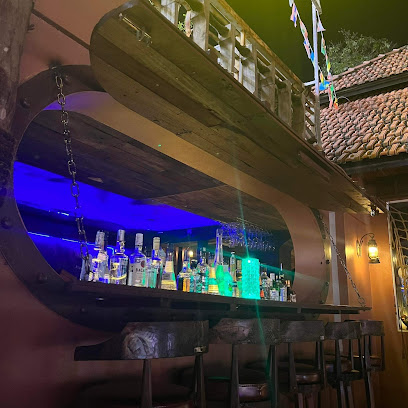
FOM Club Hạ Long
Experience the vibrant nightlife at FOM Club Hạ Long, where stunning views and lively entertainment create unforgettable memories.

On The Rocks at Citadines Marina Halong
Discover breathtaking views and vibrant flavors at On The Rocks Rooftop Bar in Ha Long Bay, a perfect blend of cocktails and tapas.

45A PUB Coffee Bar
Discover the vibrant culture of Hạ Long at 45A PUB Coffee Bar, where live music meets exceptional drinks in a cozy atmosphere.

JAM Beach Bar Hạ Long
Discover the vibrant nightlife and stunning views at JAM Beach Bar Hạ Long, where every sunset brings a new adventure.

Hush, beach bar
Discover Hush, a serene beach bar offering refreshing drinks and stunning views in Vinhomes, Dragon Bay, Hạ Long City, Vietnam.

NEW SQUARE Bar
Discover the lively ambiance of NEW SQUARE Bar, a premier live music destination in Hạ Long, perfect for a memorable night out with friends.

Love Drunkery Cocktail Bar
Discover the vibrant nightlife of Ha Long at Love Drunkery Cocktail Bar, where expertly crafted cocktails meet stunning skyline views.

Circle Mixology & Bar
Explore the vibrant nightlife of Ha Long at Circle Mixology & Bar, where innovative cocktails meet a lively atmosphere.
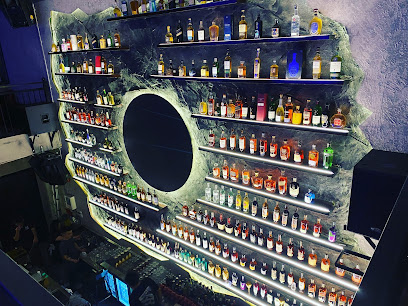
Thuy Duong Ha Long Pub Kitchen&Beer
Discover the vibrant Thuy Duong Ha Long Pub Kitchen & Beer in Ha Long City, where delicious food meets a lively atmosphere for unforgettable nights.

LUXY LOUNGE
Discover Hạ Long's nightlife at LUXY LOUNGE, where exquisite drinks and vibrant atmosphere create unforgettable experiences.

KIRARA BAR & LOUNGE バーカラオケ
Experience the vibrant nightlife at Kirara Bar & Lounge in Hạ Long, where karaoke meets a lively atmosphere and diverse drink offerings.

The Soulcatcher Hidden Cocktail Bar
Uncover the hidden cocktail oasis at The Soulcatcher Bar in Hạ Long, Vietnam, where every drink tells a unique story.

Local Phrases
-
- HelloXin chào
[sin chow] - GoodbyeTạm biệt
[tahm byet] - YesVâng
[vahng] - NoKhông
[khohng] - Please/You're welcomeXin vui lòng
[sin vooi long] - Thank youCám ơn
[kahm uhn] - Excuse me/SorryXin lỗi
[sin loy] - How are you?Bạn khỏe không?
[ban khwe khohng] - Fine. And you?Khỏe. Bạn thế nào?
[khwe. ban te nyow] - Do you speak English?Bạn có nói tiếng Anh không?
[ban koh noy tieng anh khohng] - I don't understandTôi không hiểu
[toy khohng hyeu]
- HelloXin chào
-
- I'd like to see the menu, pleaseTôi muốn xem menu, vui lòng
[toy muown sem menu, vwee long] - I don't eat meatTôi không ăn thịt
[toy khohng un tit] - Cheers!Chúc sức khỏe!
[chook sook khwe] - I would like to pay, pleaseTôi muốn thanh toán, vui lòng
[toy muown thanh toan, vwee long]
- I'd like to see the menu, pleaseTôi muốn xem menu, vui lòng
-
- Help!Cứu!
[kyoo] - Go away!Đi ra!
[dee ra] - Call the Police!Gọi cảnh sát!
[goy kenh saht] - Call a doctor!Gọi bác sĩ!
[goy bahk see] - I'm lostTôi lạc đường
[toy lack doong] - I'm illTôi ốm
[toy ohm]
- Help!Cứu!
-
- I'd like to buy...Tôi muốn mua...
[toy muown mwa] - I'm just lookingTôi chỉ xem
[toy chee sem] - How much is it?Bao nhiêu tiền?
[baow nyew tien] - That's too expensiveQuá đắt
[kwah daht] - Can you lower the price?Bạn có thể giảm giá không?
[ban koh te zam zah khohng]
- I'd like to buy...Tôi muốn mua...
-
- What time is it?Bây giờ là mấy giờ?
[bay zoh la may zoh] - It's one o'clockBây giờ là một giờ
[bay zoh la moht zoh] - Half past (10)Rưỡi (10)
[rooi] - MorningBuổi sáng
[bwowee sang] - AfternoonBuổi chiều
[bwowee chee-oo] - EveningBuổi tối
[bwowee toy] - YesterdayHôm qua
[hohm kwah] - TodayHôm nay
[hohm ny] - TomorrowNgày mai
[ngai my] - 1Một
[moht] - 2Hai
[high] - 3Ba
[bah] - 4Bốn
[bun] - 5Năm
[nahm] - 6Sáu
[sow] - 7Bảy
[bahy] - 8Tám
[tahm] - 9Chín
[cheen] - 10Mười
[mooee]
- What time is it?Bây giờ là mấy giờ?
-
- Where's a/the...?Chỗ...ở đâu?
[cho...uh dow] - What's the address?Địa chỉ là gì?
[dee-uh chee la zee] - Can you show me (on the map)?Bạn có thể chỉ cho tôi (trên bản đồ) không?
[ban koh te chee cho toy (tren bahn do) khohng] - When's the next (bus)?Khi nào là chuyến xe tiếp theo?
[khee now la chuyen se teep tay-oh] - A ticket (to ....)Một vé (đến ....)
[moht vay (den ....)]
- Where's a/the...?Chỗ...ở đâu?
History of Ha Long
-
According to Vietnamese legend, Ha Long Bay was created by a great dragon that descended from the mountains. The dragon, sent by the gods to protect the Vietnamese people from invaders, spat out jewels and jade that turned into islands and islets, forming a natural fortress. This mythical tale is the origin of the name 'Ha Long,' which means 'descending dragon' in Vietnamese.
-
Archaeological evidence suggests that Ha Long Bay has been inhabited for thousands of years. Tools and artifacts found in the area date back to the Soi Nhu culture (18,000-7,000 BC), the Cai Beo culture (7,000-5,000 BC), and the Ha Long culture (3,500-5,000 BC). These ancient cultures left behind significant artifacts, including stone tools, pottery, and shellfish remains, indicating a long history of human settlement and maritime activity.
-
During the 13th century, Ha Long Bay was the site of significant naval battles between the Vietnamese Tran Dynasty and the Mongol invaders. The most famous of these battles occurred in 1288 when General Tran Hung Dao used a clever strategy of placing steel-tipped wooden stakes in the Bach Dang River at low tide. When the tide rose, the Mongol fleet was trapped and destroyed, marking a decisive victory for the Vietnamese. This event is commemorated at the Bach Dang Historical Relic Site near the bay.
-
In the late 19th and early 20th centuries, Ha Long Bay became a popular destination for French colonialists in Vietnam. The French called it 'Baie d'Along' and established resorts and recreational facilities in the area. The bay's stunning landscapes and unique limestone formations attracted many artists, writers, and tourists, contributing to its reputation as a premier travel destination.
-
In 1994, Ha Long Bay was designated as a UNESCO World Heritage Site, recognizing its outstanding universal value due to its exceptional natural beauty and geological significance. The bay features over 1,600 limestone islands and islets, many of which are topped with lush vegetation. The intricate karst landscape, with its caves, grottoes, and hidden lagoons, is a testament to millions of years of geological evolution. This designation has helped to protect and preserve the bay's unique environment and cultural heritage.
-
Today, Ha Long Bay is one of Vietnam's most popular tourist destinations, attracting millions of visitors each year. The bay offers a range of activities, including boat cruises, kayaking, cave exploration, and visits to floating fishing villages. Efforts are ongoing to balance tourism development with environmental conservation, ensuring that Ha Long Bay remains a pristine and sustainable destination for future generations. Local authorities and organizations are working together to protect the bay's biodiversity, marine life, and cultural heritage.
Ha Long Essentials
-
Ha Long is located in Quang Ninh Province, northeast Vietnam. The nearest major airport is Cat Bi International Airport in Hai Phong, approximately 50 kilometers away. From the airport, you can take a taxi or a shuttle bus to Ha Long, which takes around 1.5 to 2 hours. Alternatively, Noi Bai International Airport in Hanoi is about 180 kilometers away, and the journey by road takes around 3 to 4 hours. Buses and private car services are available from Hanoi to Ha Long. There is also a luxury train service, the Halong Express, which runs from Hanoi to Ha Long.
-
While in Ha Long, taxis and motorbike taxis (xe om) are readily available and relatively inexpensive. Grab, a popular ride-hailing app, also operates in the area. For a more scenic and leisurely option, consider renting a bicycle or an electric scooter, especially for exploring the coastal roads. Public buses operate within Ha Long, but they may not cover all tourist spots. Renting a car is another convenient option, though navigating local traffic can be challenging for newcomers.
-
The official currency in Vietnam is the Vietnamese Dong (VND). Credit cards are accepted in most hotels, restaurants, and shops in Ha Long, but it is advisable to carry cash, especially for small transactions and in local markets. ATMs are widely available in the city. Currency exchange services are offered at banks and authorized exchange counters.
-
Ha Long is generally a safe destination for tourists. However, as with any tourist destination, it is important to take standard precautions. Avoid carrying large amounts of cash and keep your valuables secure. Areas such as Bai Chay can get crowded, so be mindful of pickpockets. Avoid walking alone at night in isolated areas. Always use reputable taxi services and avoid accepting unsolicited offers for tours from strangers.
-
In case of emergency, dial 113 for police, 114 for fire, and 115 for medical emergencies. Ha Long International Hospital and Bai Chay Hospital are the main medical facilities in the area. It is recommended to have travel insurance that covers medical emergencies. For minor health issues, there are numerous pharmacies where you can purchase over-the-counter medications.
-
Fashion: Do dress modestly, especially when visiting religious sites. Avoid wearing revealing clothing. Religion: Do respect local customs and traditions. Always remove your shoes when entering temples and pagodas. Public Transport: Do be respectful and give up your seat to elderly passengers. Don't eat or drink on public transport. Greetings: Do greet people with a smile and a slight bow. A handshake is also common in more formal settings. Eating & Drinking: Do try local delicacies and accept food offerings graciously. Don’t stick your chopsticks upright in a bowl of rice, as it resembles incense sticks used in funerals.
-
To experience Ha Long like a local, visit the morning markets where you can buy fresh seafood and produce. Engage with locals, who are often friendly and willing to share stories about the area. Don’t miss taking a boat tour of Ha Long Bay to see the stunning limestone karsts and islets. For a unique experience, visit the floating fishing villages and try kayaking in the bay. Exploring the night markets and trying street food is also highly recommended.
Trending Landmark in Ha Long
Nearby Cities to Ha Long
-
Things To Do in Hanoi
-
Things To Do in Sapa
-
Things To Do in Xieng Khouang
-
Things To Do in Phonsavan
-
Things To Do in Thakhek
-
Things To Do in Hue
-
Things To Do in Luang Prabang
-
Things To Do in Vang Vieng
-
Things To Do in Savannakhet
-
Things To Do in Da Nang
-
Things To Do in Vientiane
-
Things To Do in Hoi An
-
Things To Do in Udon Thani
-
Things To Do in Muang Sing
-
Things To Do in Tam Ky















